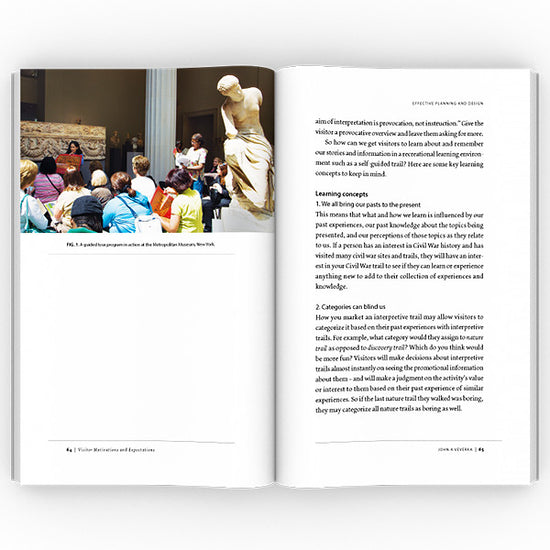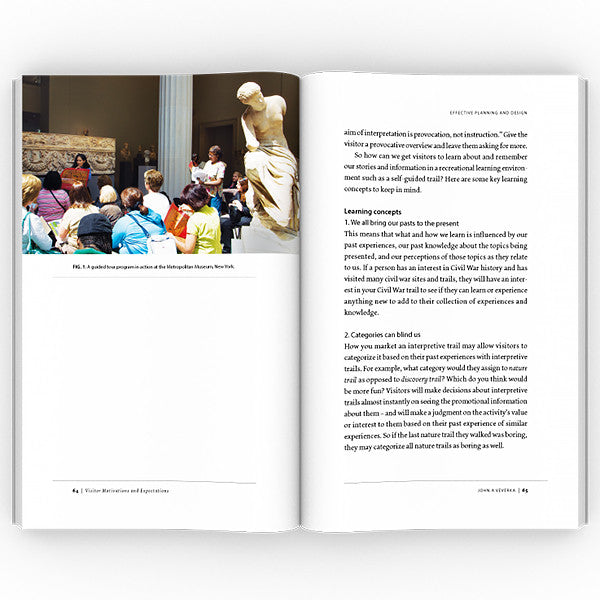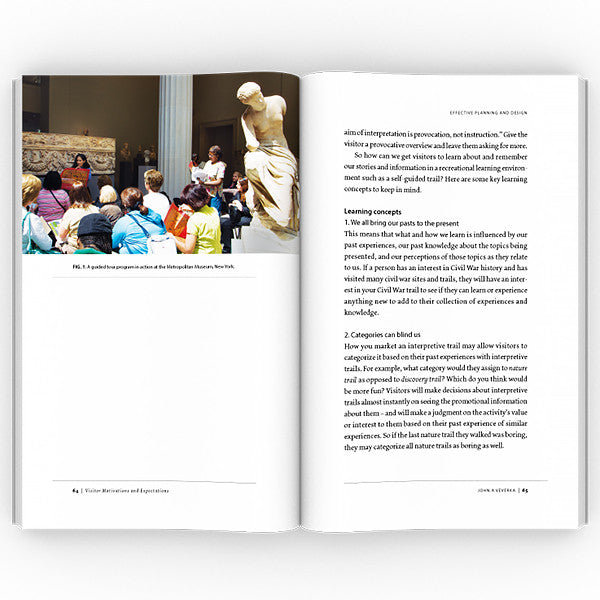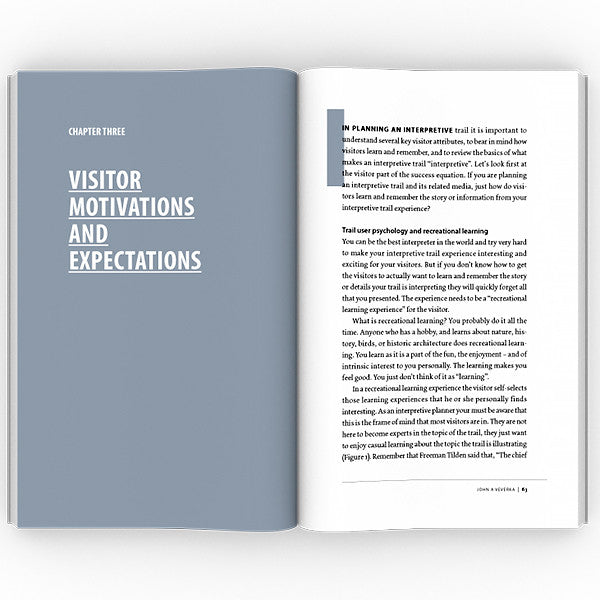Description
Contents list
More
Less
Author
More
Less
Reviews
More
Less
Data
More
Less
Description
“Most trails are designed just to get the visitor from Point A to Point B. Interpretive trails are designed to help the visitor laugh, cry, smile, discover, understand and explore along the way.”
Interpretive trails - both outdoor and indoor - are used by museums, galleries, historic sites, parks, gardens and zoos worldwide. They can provide visitors with a unique immersion experience in viewing, discovering and experiencing the locations they’re visiting, and in helping them re-connect with a natural or cultural environment in a personal way.
Yet to be truly effective, there are proven and tested guidelines to follow about how to plan your trail’s story, its experience opportunities, and its delivery and physical design. This new book - based on 40 years’ interpretive planning experience - shares successful planning strategies and guidelines as tools to help you create amazing interpretive experiences.
For those involved in learning, engagement, interpretation, planning, consultancy, landscape architecture, and training - and those charged with developing interpretive trails who have no specific training in interpretive services themselves, The Interpretive Trails Book will become an indispensable and easy-to-follow resource to help create trails that engage, motivate and inspire your visitors.
The Interpretive Trails Book will provide you with the essential skills and understanding you'll need to create a successful trail. You'll discover:
- The four key questions to ask before even starting to plan a trail.
- How to use the eyes of an artist, explorer and storyteller to help speed trail planning.
- The seven concepts you need to understand to deliver effective recreational learning.
- Proven techniques to ensure clear, practical learning objectives for your trail.
Also available: Advanced Interpretive Planning | The Interpretive Training Handbook
Contents list
Author
Reviews
Data
You May Also Like



















